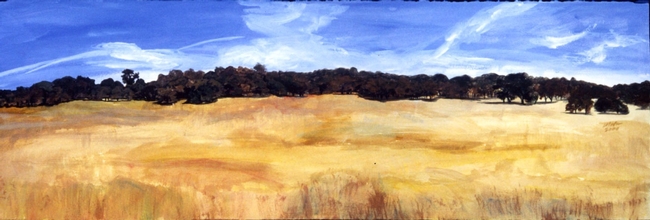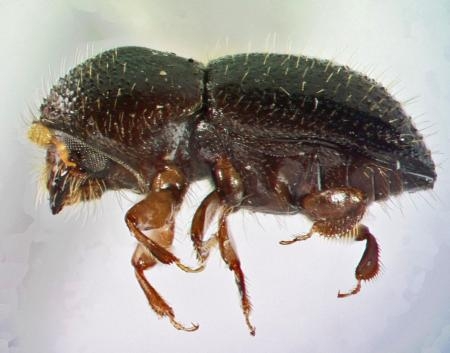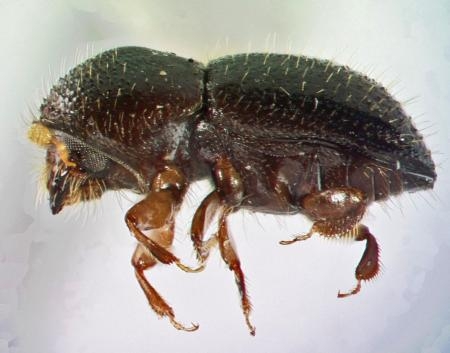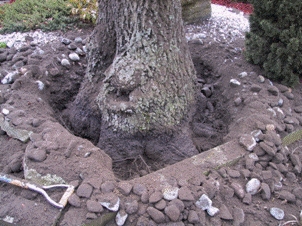
Posts Tagged: oak
Natural History of the Central Coast
Oaks and Oak Woodlands Explained
“Natural History of the Central Coast Bioregion” (adapted from Gregory Ira's announcement: https://ucanr.edu/blogs/blogcore/postdetail.cfm?postnum=31003) The publication's lead author, Bill Tietje (Environmental Science, Policy, and Management, University of California, Berkeley), with co-authors William Preston (Geographer Emeritus, Cal Poly, San Luis Obispo) and Anne Polyakov (University of California, Berkeley; currently a Masters Student, University of Washington), created a highly readable and engaging description of the Central Coast Bioregion. “We strived to write in everyday English and create a scientifically accurate and engaging presentation.” The authors succeeded on both counts by use of plain language, common plant and animal names, and short paragraphs supported with over 65 high-quality photographs, four maps, two diagrams, ten vignettes, and 70 references for further reading.
The Central Coast Bioregion, an area between the Pacific Ocean and the San Joaquin Valley, and extending from Monterrey south to Santa Barbara, is home to wildly popular and lesser known destinations. Well known areas include the Big Sur Coast, the estuaries at Elkhorn Slough and Morro Bay, and Monterrey Bay Aquarium. Some of the hidden gems are Pinnacles National Park, Santa Barbara Botanic Garden, and the Gardens of the La Purisima Mission. Together, the authors describe the origins and present composition of the region's environments: “Across the region's 15,000 square miles, physical, and biological processes, combined with time and human actions, have resulted in a broad range of ecosystems, each harboring distinct assemblages of plants and animals.” The publication uses engaging vignettes to highlight local conservationists, regional wildlife, historical and contemporary restoration efforts, and interesting places to explore. It begins with a brief history of the region, providing context to descriptions of subsequent environmental and land-use changes, a reminder to readers that while the future of the central coast is uncertain it will be shaped by our actions. You can find the publication at:https://anrcatalog.ucanr.edu/pdf/8597.pdf
Sharing Oak Woodland Research through a Popular Website (adapted from Devii Rao, Bill Tietje,Luke Macaulay, and Judi Young) Since its creation in 1995, the University of California Oak Woodland Management website has been a valuable educational resource. Based on Google Analytics data from 2011 to 2017, the website receives an average of 45,000 users annually. It is a repository of nearly 30 years of research and outreach data on the ecology, management, and conservation of California's 8 million acres of oak woodlands.
Recent staff retirements and changes in website standards created a need for an update and redesign. To accomplish this, the University of California Cooperative Extension received a Renewable Resources Extension Act Capacity Grant that allowed us to reformat the website for mobile devices; make the website more functional and visually appealing; add some of the latest research; and promote the website to groups who have not historically used it, in particular, the ranching community.
To increase user friendliness, we developed links at the top of the home page for the three primary target audiences: homeowners, land-use planners, and ranchers. On the home page, we also highlighted five topics that receive the most hits: species identification and ecology; oak regeneration and restoration; economic and ecological values of woodland stands; threats to oak woodlands; and woodland wildlife. The new website, now called UC Oaks, went live in June of 2020.
The new flexible website design will allow us to continuously meet the needs of our clientele. With its new look and expanded reach, we hope that the website will be a one-stop-shop for everything people need to know about oak woodland conservation and management. https://oaks.cnr.berkeley.edu/

oak landscape
Shot Hole Borer Training
Come Learn About Field Identification of Invasive Shot Hole Borers
We're holding two early December trainings on invasive polyphagous and Kuroshio shot hole borer biology, identification, surveillance, and management of infested trees and downed wood. We'll cover these topics in the classroom, then head outside to see infested trees and learn how to identify signs of shot hole borer damage, set up a monitoring program, and sample trees.
$30.00 Registration fee includes lunch, a ISHB Field Guide, and ISHB Demonstration Kit
Continuing Education Units from DPR have been requested, check back for updates.
Speakers include Sabrina Drill, UCCE Natural Resources Advisor; Bea Nobua-Behrmann, UCCE Research Scientist; Kim Corella, Forest Pest Specialist, CalFire; and Paul Rugman-Jones, Research Entomologist, UC Riverside.
Ventura County - Ojai - Dec.6
Meiners Oaks (Ojai) Class & Field Training at Saint Thomas Aquinas Church
Thursday December 6, 2018, 10am – 2:30pm
Los Angeles County - Gardena - Dec. 7th
Gardena Class & Field Training at Gardena Moneta Mason Lodge & Gardena Willows Wetland Preserve
Friday December 7, 2018, 10am – 3:00pm

field id
Shot Hole Borer Training
Los Angeles County Spring 2018 ISHB/GSOB Field Trainings
Registration now open
Learn how to recognize the signs of invasive shot hole borer and gold spotted oak borer infestations in native and landscape trees. Each training will cover how to recognize signs, symptoms, active and inactive populations, take field samples, treatment options, proper handling and disposal of green waste.
- Huntington Gardens, Tuesday May 8, 10:30 - 12:30
training entrance: 1800 Orlando Avenue, San Marino CA 91108
2) O'Melveny Park, Thursday May 17, 10:00 - 12:00
17300 Sesnon Blvd, Granada Hills CA 91344
The events are free, but registration is limited. To register, go to www.pshb.org and click on the calendar entry, or go directly to http://ucanr.edu/sites/gsobinfo/News_and_Events/GSOB_Training_Event_Registration/?editon=0
These trainings were initially offered as part of a series with two live webinars, which have now past – if you did not attend the webinars, unfortunately, these trainings alone will NOT offer CEUs.
AS OF 5/3/2018, THE ONLY FIELD TRAINING WITH SPACE REMAINING IS THURSDAY, MAY 17TH, O'MELVENY PARK, LOS ANGELES COUNTY. IF YOU CANNOT ATTEND THIS TRAINING, DO NOT REGISTER.

pshb insect
More Shot Hole Borer News
Ambrosia beetles comprise a group of over 6,000 species in the Scolytinae subfamily. Most of these beetles typically attack decomposing and dead trees. The Polyphagous/Kuroshio Shot Borers have been reports on over 300 landscape and wildland living tree species, including avocado. Decline and death of trees has been noted in California since 2012, and the full economic extent is still unclear. The beetles feeds on a fungal symbiont that is introduced into the tree, and it is the fungus that spreads throughout the tree and causes the tree decline and death.
What was once thought to be another species of beetle (Tea Shot Hole Borer) and then identified as a new species - Polyphagous Shot Hole Borer- and now expanded to include another species of borer – Kuroshio Shot Hole – is showing that its fungal partners can be quite diverse. A recent publication indicates the increasing tangled association of the shot hole borer/disease complex that is affecting avocado and other tree species.
Two Novel Fungal Symbionts Fusarium kuroshium sp. nov. and Graphium kuroshium sp. nov. of Kuroshio Shot Hole Borer (Euwallacea sp. nr. fornicatus) Cause Fusarium Dieback on Woody Host Species in California
Francis Na, Joseph D. Carrillo, Joey S. Mayorquin, Cedric Ndinga-Muniania, and Jason E. Stajich, Department of Plant Pathology and Microbiology, University of California, Riverside, 92521; Richard Stouthamer, Department of Entomology, University of California, Riverside, 92521; Yin-Tse Huang, Department of Plant Pathology, National Chung Hsing University, Taichung 402, Taiwan, ROC, and School of Forest Resources and Conservation, Institute of Food and Agricultural Sciences, University of Florida, Gainesville; Yu-Ting Lin and Chi-Yu Chen, Department of Plant Pathology, National Chung Hsing University, Taichung 402, Taiwan, ROC; and Akif Eskalen,† Department of Plant Pathology and Microbiology, University of California, Riverside, 92521
https://apsjournals.apsnet.org/doi/abs/10.1094/PDIS-07-17-1042-RE
Shot hole borer (SHB)-Fusarium dieback (FD) is a new pest-disease complex affecting numerous tree species in California and is vectored by two distinct, but related ambrosia beetles (Euwallacea sp. nr. fornicatus) called polyphagous shot hole borer (PSHB) and Kuroshio shot hole borer (KSHB). These pest-disease complexes cause branch dieback and tree mortality on numerous wildland and landscape tree species, as well as agricultural tree species, primarily avocado. The recent discovery of KSHB in California initiated an investigation of fungal symbionts associated with the KSHB vector. Ten isolates of Fusarium sp. and Graphium sp., respectively, were recovered from the mycangia of adult KSHB females captured in three different locations within San Diego County and compared with the known symbiotic fungi of PSHB. Multigene phylogenetic analyses of the internal transcribed spacer region (ITS), translation elongation factor-1 alpha (TEF1-α), and RNA polymerase II subunit (RPB1, RPB2) regions as well as morphological comparisons revealed that two novel fungal associates Fusarium kuroshium sp. nov. and Graphium kuroshium sp. nov. obtained from KSHB were related to, but distinct from the fungal symbionts F. euwallaceae and G. euwallaceae associated with PSHB in California. Pathogenicity tests on healthy, young avocado plants revealed F. kuroshium and G. kuroshium to be pathogenic. Lesion lengths from inoculation of F. kuroshium were found to be significantly shorter compared with those caused by F. euwallaceae, while no difference in symptom severity was detected between Graphium spp. associated with KSHB and PSHB. These findings highlight the pest disease complexes of KSHB-FD and PSHB-FD as distinct, but collective threats adversely impacting woody hosts throughout California.

pshb insect
After Flooding, Buried Trunks a Problem
A trunk "below grade", that is a buried trunk, is a problem for most trees. Willows and other riparian trees along water ways that are inundated regularly can adapt to a change in soil depth around their trunks. That's not true of most of our commercial tree species, and avocados and citrus are really susceptible to buried trunks/stems. they asphyxiate. This can be a very common problem at planting when a hole is too deep and the new tree settles in the loosen earth and gradually the stem is buried. Or, when the grower is doing the "right thing" and using an organic planting mix that gradually decomposes and the tree settles into the ground and the crown is covered by dirt. The tree then starts looking bad - leaves yellow. The canopy defoliates. All the while, the grower is putting on more water and more fertilizer and the tree looks worse and worse. Remove the soil from around the base, and voila, in a few months the tree is happy again. If the dirt isn't moved, the stressed tree is now susceptible to root rots, both Phytophthora and Armillaria. Those problems are a lot worse than just lack of air.
This suffocation is a common problem after flooding. Dirt from higher up moves into lower positions, gravity moving dirt can move a lot. It accumulates around the base of the tree. The grower is preoccupied with other things that occur with flooding and does nothing. A few months later, the trees start turning yellow especially when the weather warms up and they are more active and more water is being applied. Flooding can also spread disease organism from other areas that are contaminated. Oak root fungus is frequently spread in flooding waters, especially in the lower positions in little valleys.
Pulling that accumulated soil away from tree is important for tree health. It's something that needs to be done soon after the flooding incident, or any event that buries the tree trunk.

buried tree trunk
